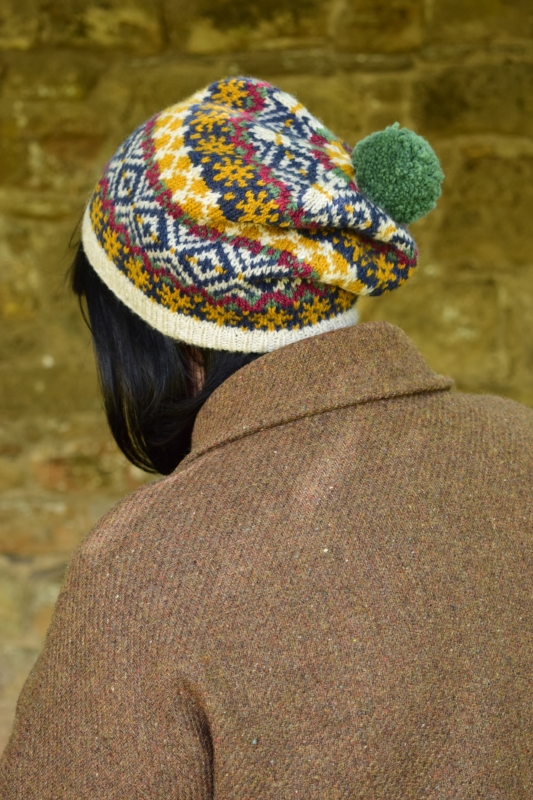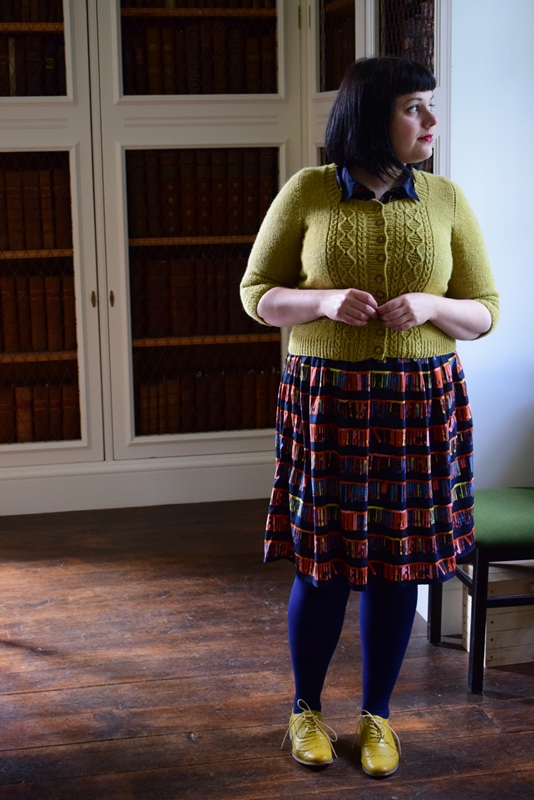Welcome to the eighth of ten posts introducing the patterns in This Thing of Paper. We are launching the book on November 30, so I want to take you through the patterns and their stories. We are almost there!
I shouldn't play favourites, but the Marginalia jumper is really one of my favourite patterns in the book. It is a beautiful Everyday Wardrobe jumper that is easy to knit and even easier to wear. It is a top-down raglan jumper with a raised back (which makes it fit even better) and waist shaping. The only real interest is a slip-stitch pattern along the hem and the wrists. I rarely knit my patterns twice due to time constraints, but I've made Marginalia twice.
The jumper is worked in Blacker Yarns Lyonesse DK - a gorgeous wool/linen blend which relaxes as you wear it. I am fairly obsessed with this yarn as the feel of it against your skin is absolutely amazing, It relaxes as you wear it which the pattern takes into consideration. As written and worked in Lyonesse DK, your finished Marginalia will have some degree of ease, but if you substitute with a less drapey yarn, your garment will be more fitted.
Marginalia is named after the practise of writing in the margins of books. I know some people hate the idea of writing in books, but I love encountering previous readers in the margins of my secondhand books. I wanted to design a garment that was relatively straightforward but had some "writing in the margins". I have been somewhat obsessed by the idea of the paratext for years and early incarnations of Marginalia had me exploring the idea of making the paratext into text. In knitting terms, that meant thinking about what made a jumper into a jumper - the body, the sleeves, the openings for the head/body/hands, the idea of a front & a back and the ribbing. After deciding that nobody wanted a three-sleeved jumper or an all-over rib garment, I started working on the idea of marginalia (itself a paratextual element) and the notion of 'making marks'. I thought about ink slipping across the surface of a page - and the idea of a slip-stitch pattern around the, ahem, margins of the jumper became obvious.
Like so many of the other patterns, Marginalia was shot on location at Innerpeffray Library, Scotland. We used the small room off the main reading room for this shoot — the 19th century and 20th century books are kept in there — and I loved curling up in the comfortable reading chair and looking out across the fields dotted with sheep. I could have stayed there forever.


















